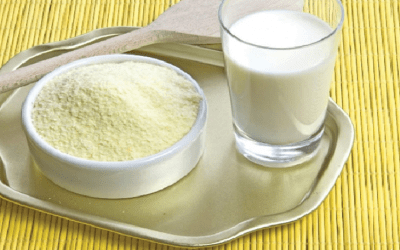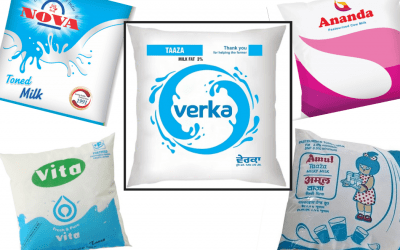Everything you need to know about packaged milk

Every one of us are using packaged based products on a day to day basis. But the fact is that most of us do NOT know what is Tetra Pack or any packaged products for that matter. This is the complete guide on packaged milk; from terms to know to the packaging details.
Packaged milk can be categorized according to fat and solids-not-fat (SNF) content as follows:
- Full cream milk: Fat 6.0 percent and SNF 9 percent (minimum)
- Toned milk: Fat 3.0 percent and SNF 8.5 percent (minimum)
- Doubletoned milk: Fat 1.5 percent and SNF 9 percent (minimum)
Full cream milk means milk or a combination of buffalo or cow milk or a product prepared by combination of both that has been standardized to fat and solids-not-fat (SNF) percentage, by adjustment/addition of milk solids. It shall meet the minimum laiddown requirement of 6 percent for fat and 9 percent for SNF. Full-cream milk shall be pasteurized. It shall show a negative phosphatase test. It shall be packed in clean, sound and sanitary containers properly sealed so as to prevent contamination.
Toned milk means the product prepared by admixture of cow or buffalo milk or both with fresh skimmed milk; or by admixture of cow or buffalo milk or both that has been standardized to fat and solids-not-fat percentage by adjustment of milk solids. It shall meet the minimum laid down requirement of 3 percent for fat and 8.5 percent for SNF. It shall be pasteurized and shall show a negative phosphatase test.
Double toned milk is actually prepared by reducing the fat contents i.e. the fat layer is removed twice. It shall meet the minimum laid down requirement of 1.5 percent for fat and 9 percent for SNF.
Terms to Know
Pasteurization is the process of heating a food, usually liquid, to a specific temperature for a definite length of time, and then cooling it immediately. This process slows microbial growth in food.
Unlike sterilization, pasteurization is not intended to kill all microorganisms in the food. Instead, pasteurization aims to reduce the number of viable pathogens so they are unlikely to cause disease (assuming the pasteurized product is stored as indicated and consumed before its expiration date).
Pasteurization is typically associated with milk. It is the main reason for milk’s extended shelf life.
Sterilisation refers to any process that eliminates (removes) or kills all forms of life, including transmissible agents (fungi, bacteria, viruses, spore forms, etc.) contained in a food, liquid, etc.
To keep milk for longer than few days at ambient temperature, it needs to be sterilized. The traditional process involves heating milk in a sealed container at a temperature of at least 115 degrees C for 15 minutes to ensure preservation at room temperature for a period of not less than 30 days from the date of manufacture.
More recently, UHT processes have been introduced. When UHT is combined with sterile handling and container technology (such as aseptic packaging), it can even be stored unrefrigerated for 6–9 months. UHT processing holds the milk at a temperature of 135 degrees C (275 degrees F) for a minimum of one second or more in a continuous flow, after which the milk is packed to ensure preservation at room temperature for a period of not less than 15 days from the date of manufacture.Milk simply labelled ‘pasteurized’ is usually treated with the HTST method, whereas milk labelled ‘ultra-pasteurized’ or simply ‘UHT’ has been treated with the UHT method.
Do Not Break the Cold Chain
A high level of microbial count in milk may be due to not maintaining the cold chain during storage and transportation (below 8 degrees C) from plant to retailer as also from retailer to consumer. High levels of aerobic plate count were found in our previous studies conducted in 2011 and 2015.
Food Safety and Standards Regulations and Bureau of Indian Standards (BIS) state that milk should meet the specified requirement for aerobic count and coliform content at processing/plant level only. The fact is proper temperature needs to be maintained all the way to the delivery point – the cold chain must be maintained at 8 degrees C to avoid microbial growth. Consumers are advised to buy milk from authorized booths/retailing units of manufacturers. They should avoid buying open milk packets kept in grocery shops.
Boiling the Milk Is Essential
Milk is a perishable product and tends to spoil if not stored at a holding temperature below 8 degrees C. Therefore it should be boiled before consumption to prevent microbiological contamination.As per a study published in The Journal of American Science, boiling of milk is recommended as follows:
- Milk boiling for two minutes provides the consumer the required safety. However, continuous stirring is essential, particularly at boiling temperature, to make sure that the formed foam is exposed to boiling temperature.
- A large number of people heat and re-heat the same milk again and again, and that too at a high temperature for a long time, thus killing the nutrients. According to experts, milk subjected to less heating retains its nutrient value. Experts say milk should ideally be boiled not more than twice and not for more than 2 to 3 minutes.
Boiling Milk Tips
- Do not boil milk for an extended period of time.
- Do not leave your milk out in the open after boiling; refrigerate it immediately.
- Do not heat milk repeatedly.
- Stir the milk while boiling.
- Do not use microwave ovens to heat and re-heat milk.
- Use ultra-high-temperature milk that comes in tetra packs. It guarantees both nutrition and convenience.
Packing and Marking
Milk should be packed in food-grade poly pack to retain its natural properties within its shelf life. Each packet of milk should be marked/labelled with these particulars:
- Name and type of product with proper prefix (toned, full cream, etc.)
- Name and complete address of manufacturer and manufacturing unit/packer
- Batch or code number
- Net quantity in litre/millilitre
- ‘Use by’ date
- MRP
- Storage instructions
- Nutritional information per 100 ml
- Name, address, telephone number, email address of person/office to be contacted in case of consumer complaints
Consumer VOICE has tested 9 popular brands of Toned Milk to find the best toned milk brand in India. We have also compared brands to know the healthiest flavoured milk brands.
Related
Dairy Whitener-Which brand stands the test?
There has been a surge in the consumption of dairy whiteners these days. Those who use them in coffee and tea find it dissolves easily and gives...
Packaged Pasteurised Toned Milk
packaged milk. However, that area is too cluttered with a host of different milk brands claiming safety, purity and strength. To know what is there...
What is flavoured milk?
Flavoured milk is a ready-to- drink product, produced from milk, sugar and natural flavours (such as banana, pineapple, orange or chocolate). Milk...



